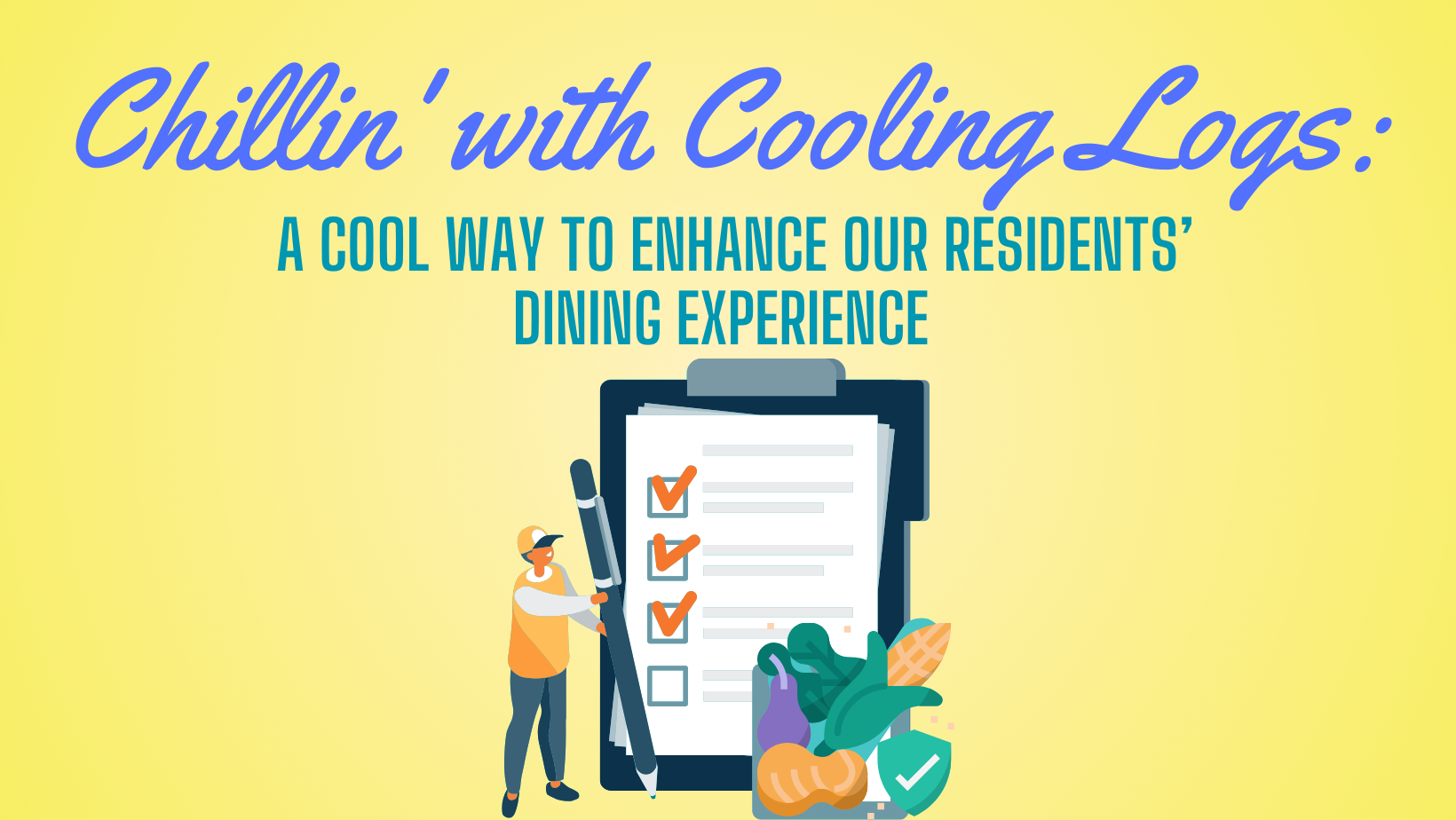Chillin’ with Cooling Logs
by Jean Swailes, MS, RD, CSG
In the bustling world of food service, a vital task often gets forgotten- filling out cooling logs. Although it takes just a few minutes a day, I have heard every excuse in the book as to why these logs aren’t completed. While filling out cooling logs may sound mundane, it is actually critical to ensuring the well-being and satisfaction of our residents. Let’s explore why facilities should be excited to utilize leftovers and how to correctly fill these logs out. We'll also tackle why these logs get neglected and how to make logging fun for staff. Let’s keep our food safe, delicious, and compliant!
Why Are Cooling Logs Important?
Food Safety: Cooling logs are not just bureaucratic paperwork; they are guardians of food safety. Cooling logs help us keep track of cooling food items and ensure we limit time food items spend in the “temperature danger zone” (40-140F). This ensure we prevent the growth of harmful bacteria. This is crucial for the health of elderly residents, who are at increased risk of foodborne illness.
Quality Assurance: Properly cooled food extends it’s shelf life and ensures a great tasting product when the food is reheated.
Variety and Cost Savings: Completing cooling logs allows us to utilize leftovers and cut down on food costs. Leftovers are not the enemy; they are the secret weapon in the quest to provide residents with diverse and interesting meal options. Imagine heating up a bowl of last night's hearty soup for an afternoon snack, offering residents a break from their regular snack selection.
How Do We Fill Out The Cooling Logs?
Get the Right Tools: Don’t make filling out these logs a pain! Ensure digital thermometers are easily accessible and ensure that there are always plenty of blank cooling log forms located in a visible area.
Record Starting Temperature: As soon as food is cooked, measure and record its starting temperature on the log.
Keep Track of Time: Set a 2 hour timer to ensure you don’t forget to check the temperature of the food. The leftovers should be cooled to 70°F or below within two hours and then from 70°F to 40°F or below within an additional four hours.
What Do We Do if the Product Doesn’t Reach 40F on Time?
Take Corrective Action: Act promptly. Adjust the cooling process as needed. This might involve dividing the product into smaller portions, using ice baths, putting in the freezer, adding a rapid cooling paddle, or repairing malfunctioning equipment.
Document the Incident: Ensure that any corrective actions taken are documented on the cooling log. This is crucial for maintaining a record of food safety practices.
Recheck Temperatures: Continue to monitor and record temperatures until the food product reaches the required safe temperature. If the you are not able to get the food product below 40 in 6 hours then you will need to throw it out.
Common Excuses for Neglecting Cooling Logs:
"We Don't Keep Leftovers, So We Don't Need Cooling Logs": This is a common excuse that is used to forgo keeping cooling logs. However, throwing out leftovers is actually a disservice to our residents. Leftovers offer a chance to surprise residents with unique and comforting dishes, especially during snack times when the regular menu might not apply.
"It's Too Tedious and Time-Consuming": Filling out logs may seem like a chore, but it's a necessary one. It takes only a few minutes and can prevent serious illness.
"Nobody Checks Anyway": Some staff members may believe that no one bothers to review cooling logs. However, these records are essential for audits and inspections, and they ensure accountability in food preparation. As a manager, make sure to consistently check the cooling logs and hold your team accountable.
How to Make Cooling Logs Fun and Easy:
Gamify the Process: Turn logging into a friendly competition among kitchen staff. Offer small prizes or recognition for consistently accurate and timely entries.
Create a Cool Log Design: Jazz up the appearance of cooling logs with colored paper or a fun design. This will make it more eye-catching and fun to fill out.
Host a Team Lunch & Learn: Create a fun and relaxing learning environment. Provide snacks or pizza for staff and teach them about cooling logs and how to properly complete them. Encourage staff to bring up questions or concerns they may have about the process. Create a quiz at the end to ensure everyone understands and provide one on one coaching with individual staff members if needed.
Cooling logs may not be the most thrilling aspect of food service, but they play a vital role in ensuring the safety and satisfaction of our residents. Leftovers should not be dismissed but embraced as an opportunity to provide more variety and reduce food waste. By infusing some fun and creativity into the process, and adhering to HACCP guidelines when things go awry, you can turn cooling logs into an enjoyable and productive task. Let's keep it cool, keep it safe, and keep our residents happy!

